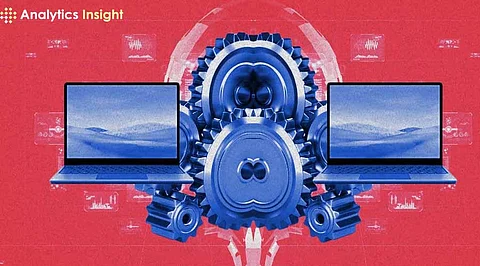

Open-source projects will always be the backbone of innovation in data science. They offer free access to tools, libraries, and frameworks that empower individuals and organizations to leverage data effectively.
Whether you are a seasoned professional or a beginner, exploring open-source projects can further enhance your skills and make you a part of the larger group. Here is a rundown of the top 10 open-source data science projects in 2024 that are making a buzz in the industry.
Application: Deep learning and machine learning
TensorFlow is one of the most popular open-source libraries for machine learning and development today. Google supports it and encompasses many tasks, from building neural networks to deploy machine learning models in production. With its vast community and documentation, TensorFlow is a must-have tool for every data scientist.
Application: Machine learning and deep learning research
PyTorch has emerged as a stiff competitor to TensorFlow. The primary feature that would have made it better probably was the dynamic computation graph on PyTorch, which would allow for debugging and flexibility, making it more favorable for doing experimental machine learning projects and research in the academic setting.
Application: Simplified machine learning for beginners
Scikit-learn is a lightweight library suited for classic machine learning tasks, ranging from regression and classification to clustering. It is easy to work with and allows a seamless interface with other established Python libraries like NumPy and Pandas, which are the backbone of many data scientists' toolkits.
Application: Big data processing and analytics
Apache Spark is the top framework for big data processing. With its distributed computation functionalities, it can efficiently process large volumes of data. Spark supports programming languages like Python, Java, and Scala, providing variety for various engineering and analytics works.
Application: Interactive data exploration and visualization
Jupyter Notebooks has changed how data scientists document their work. This open-source tool amalgamates Code, Visualizations, and Text into a single interactive notebook ideal for sharing insights with peers and conducting collaborative work.
Purpose: Deep Learning in a simplified form
Keras is the high-level neural networks API built on top of TensorFlow. It allows for the easy creation of deep learning models. Its friendly syntax allows users to experiment with complicated architectures without losing focus on technicalities.
Purpose: Manipulation and analysis of data
Pandas is famously known for data manipulation in Python. The DataFrame data structure makes all operations, like filtering, grouping, and aggregating data, intuitive and effective while only working on large datasets.
Use Cases: Visualization of data
Matplotlib and its offshoot, Seaborn are essential for insightful visualization. While Matplotlib forms the base for plotting, Seaborn extends it with aesthetically pleasing, high-level interface options for statistical graphics.
Purpose: Compute scalable for data science
Dask adds pandas-like functionality to data sets larger than memory. It simplifies parallel and distributed computing, which is helpful for a data scientist working on computationally intensive projects.
Purpose: Building Data Science Apps
Streamlit is a rising star in the data science community. The framework supports the easy transformation of any Python script into an interactive web application. This makes it useful for presenting machine learning models, visualizations, or dashboards to non-technical stakeholders.
Open-source projects promote collaboration and community involvement. They guarantee that innovation can come from various sources, be it sharing code, fixing bugs, or creating new features. For data scientists, such projects present opportunities to improve their skills, build portfolios, and stay abreast of industry trends.
For those unsure about open source, it can seem very intimidating at first. But start exploring the GitHub repositories of these projects, where you can find beginner-friendly issues and documentation that will guide you. Contributions can range from bug fixes and documentation writing to developing new features.
Open-source data science projects are the driving force in technological innovation worldwide. Innovations and democratization of the availability of tools and resources create an environment where people and companies can wield data power. Through participation in such projects, you can stand ahead of the ever-increasing competition in data science while making a meaningful impact within your community.
Whether you create predictive models, analyze big data, or visualize insights, these top 10 open-source projects provide you with the breadth and the toolset to advance your data science career.
